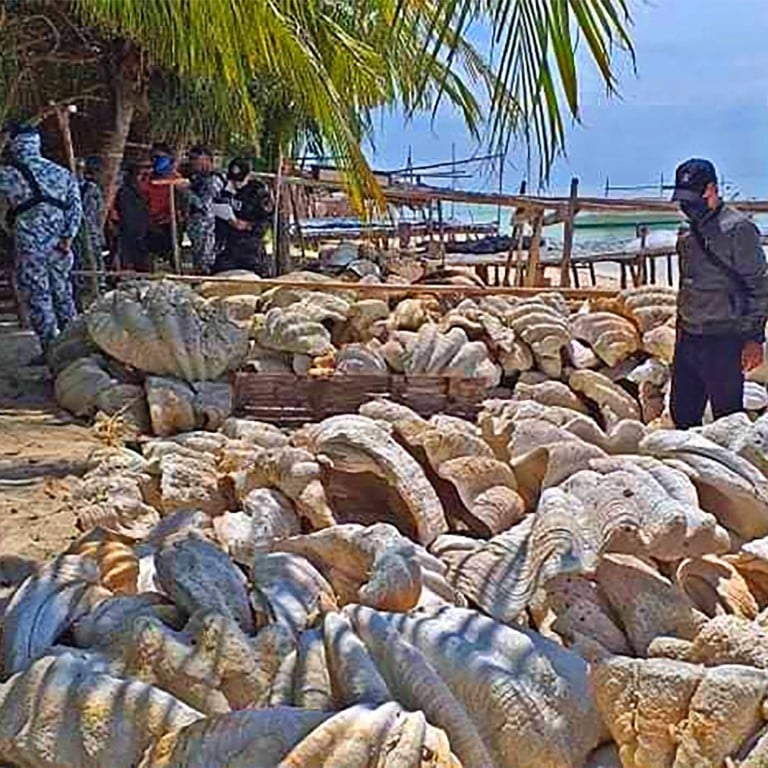
China urged to save coral reefs in Asian waters amid booming illegal trade in giant clams
- The clams are highly sought after by China’s jewellery carving industry as a result of curbs on ivory trading
- Marine scientists are calling for China to take part in joint efforts to survey the reef damage in mostly contested waters
Over 20,000 acres of coral reefs have been destroyed mainly due to illegal demand for giant clams, according to a study by the US think-tank CSIS Asia Maritime Transparency Initiative, which says they are bound for China where the shells are coveted as carved ornaments.
“It’s supposed to be illegal. Nevertheless, there’s been documented evidence of it happening.”
Will a UN biodiversity treaty stir more tension in the South China Sea?
Speaking in Kuala Lumpur, Prétat said that while China’s sand dredging and island building around the disputed Spratly and Paracel Islands are widely reported, it is secondary to the damage done by the harvesting of giant clams from coral reefs.
Using satellite imagery, Prétat said that China’s dredging and landfilling efforts were found to have damaged over 4,500 acres of coral reef – a figure which leaps to over 20,000 acres when added to the damage caused by giant clam harvesting.
“It is important to underscore that – even though it’s less covered and less known – giant clam harvesting has damaged a much larger area of coral reefs,” Prétat said.
Adding that there is only so much marine scientists can learn from satellite-based research, he called for governments in the region – including China – to mount joint on-site investigations into the deteriorating state of the reefs.
“Certainly China should also be included … and China has many excellent marine scientists,” he said. “All the coastal states need to be involved if you want to learn what’s going on.”
Giant clams under threat as poachers target Philippine, Indonesian waters
Demand for the molluscs – often over a metre wide – has surged in tandem with stricter global controls on ivory, with the visual similarity of the massive clams making them highly sought after by China’s jewellery carving industry.
Normally found around coral reefs, giant clams are typically extracted by digging up the reefs, causing massive damage to their surroundings, which take many years to mature.
Other techniques that have been used in Philippine waters are even more damaging as they use water pumps to induce pressure on the reefs, resulting in their destruction and revealing giant clams underneath them.
The harvesting of giant clams in the South China Sea was first detected in 2012 and has ramped up after Beijing banned the harvesting of the molluscs in its waters in 2015, pushing poachers to venture further out.
Is Philippines at front line of ‘WWII-style war’ with China over disputed sea?
The lack of clear maritime jurisdiction due to the contested status of the waters by surrounding nations, including China’s ‘nine-dash line’, has made it difficult to conduct enforcement.
Last April, a rare report on the invertebrate, titled Trading Giants published by wild species trade watchdog TRAFFIC showed that some species are becoming “functionally extinct” in several countries, including Indonesia and the Philippines, meaning their disappearing population is no longer plays a role in the ecosystem.
The CSIS report found signs of depleting fish stocks in the South China Sea, with annual fishing catch rising steadily from the 1950s before reaching a plateau in 1998.
“There is certainly some portion of the catch that is being affected by the destruction of these coral reefs. How much is that versus the overfishing is very hard to separate,” Prétat said.


